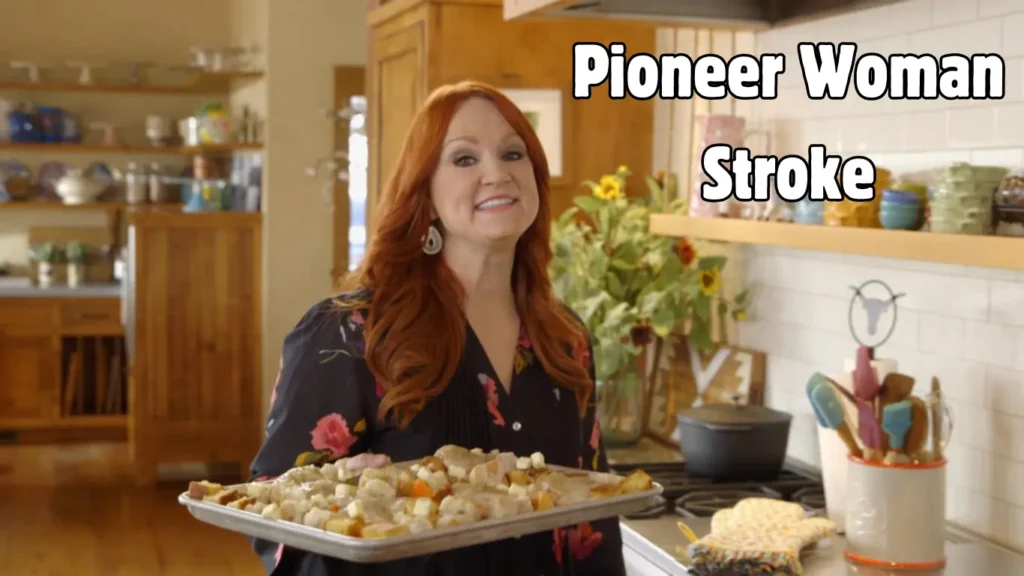When someone searches for pioneer woman stroke, they’re usually looking for clear, compassionate, and practical information about stroke—especially how it affects women uniquely. A stroke can feel like a sudden, frightening event that disrupts life in unexpected ways. It affects not just the body, but emotions and family dynamics too.
In this article, we’ll explore everything you need to know about strokes from the perspective of women who carry many roles and responsibilities, much like pioneers in their homes and communities. You’ll find helpful insights, real-life experiences, and advice to help recognize the signs, understand risks, and take steps toward recovery.
What Exactly Is a Stroke?
A stroke happens when blood flow to a part of the brain is cut off or severely reduced. Without oxygen-rich blood, brain cells begin to die, which can lead to lasting damage or even be life-threatening.
There are a few main types:
- Ischemic Stroke: The most common type, caused by a blood clot blocking an artery to the brain.
- Hemorrhagic Stroke: Occurs when a blood vessel bursts, leaking blood into the brain.
- Transient Ischemic Attack (TIA): Often called a mini-stroke, symptoms are temporary but signal a serious warning.
Why Are Women Especially Important in This Conversation?
Women experience strokes differently than men, and their recovery paths often involve unique challenges. The term pioneer woman stroke reflects this idea: women who are often the backbone of their families, workplaces, and communities face health risks that may not always get enough attention.
Specific Factors That Increase Stroke Risk in Women:
- Hormonal Changes: Pregnancy, childbirth, menopause, and hormone therapy influence stroke risk. For example, pregnancy can increase the chance of blood clots, while menopause brings changes in blood vessels and blood pressure.
- Autoimmune Disorders: Conditions like lupus and rheumatoid arthritis occur more often in women and can raise stroke risks through inflammation and blood vessel damage.
- Migraines with Aura: Women who experience this specific type of migraine have a slightly higher chance of stroke, especially if combined with smoking or hormonal birth control use.
- Heart Health: Irregular heartbeats (atrial fibrillation) are a major cause of strokes, and this condition may be harder to detect in women.
Understanding these factors helps women recognize when they might need medical advice or closer monitoring.
Recognizing the Warning Signs of Stroke: Every Second Counts
Early recognition of stroke symptoms can be life-saving. Unfortunately, some symptoms in women can be subtle or different from the typical signs, which makes awareness essential.
Use the BE FAST approach to remember the common warning signs:
- Balance: Sudden loss of coordination or dizziness
- Eyes: Blurred or double vision, sudden trouble seeing
- Face: One side drooping or numbness
- Arms: Weakness or numbness, especially on one side
- Speech: Difficulty speaking or understanding
- Time: If you notice any of these signs, call emergency services immediately
Women may also experience unusual symptoms like sudden fatigue, chest pain, nausea, or confusion, so trusting your instincts and seeking help quickly is key.
The Emotional Impact: Stories That Resonate
A stroke is not just a medical event; it’s an emotional upheaval. Women who experience strokes often face fear, uncertainty, and the challenge of redefining their roles at home and work.
One woman shared her story:
- “After my stroke, I felt overwhelmed by the sudden loss of independence. I worried about being a burden, but the love and patience of my family kept me going. Every small step forward in therapy was a victory.”
- This emotional journey highlights the importance of support—both from loved ones and healthcare professionals—during recovery. It’s normal to feel scared or frustrated, and acknowledging these feelings is part of healing.
Treatment Options and What to Expect
Treating a stroke depends on its type and severity, but quick action is crucial.
For ischemic strokes, medications that dissolve clots may be administered if caught early.
For hemorrhagic strokes, surgery or other interventions may be necessary to control bleeding.
After emergency treatment, rehabilitation becomes a cornerstone of recovery. This may involve physical therapy to regain movement, speech therapy to address communication challenges, and occupational therapy to help resume daily activities.
Many women find that rehabilitation is not just physical but also emotional and mental. Patience, persistence, and celebrating small progress make a big difference.
Preventing a Stroke: Taking Control of Your Health
Prevention is often the best medicine. Women can take active steps to reduce their stroke risk by focusing on:
- Regular Health Screenings: Monitoring blood pressure, cholesterol, and blood sugar levels
- Healthy Lifestyle Choices: Balanced diet rich in fruits, vegetables, and whole grains; regular exercise to maintain a healthy weight
- Avoiding Tobacco and Limiting Alcohol: Both increase stroke risk significantly
- Managing Chronic Conditions: Diabetes, heart disease, and autoimmune disorders should be carefully controlled with your healthcare provider’s help
- Reviewing Medications: Discuss birth control and hormone therapy options, especially if you have other risk factors
These actions don’t just reduce stroke risk—they improve overall well-being.
Supporting a Loved One Through Stroke Recovery
If a family member or friend experiences a stroke, your support can be a lifeline. Simple actions like helping with daily tasks, encouraging therapy attendance, and offering emotional reassurance make a huge impact.
Remember, recovery can be slow and sometimes frustrating. Celebrating small milestones and being patient are key to staying motivated and hopeful.
Final Thoughts
The story of the pioneer woman stroke is one of courage and resilience. Women face unique challenges, but with awareness, early action, and support, stroke survivors can reclaim their lives and continue to inspire those around them.
If you recognize any signs of stroke or have concerns about your risk, don’t hesitate to seek medical advice. Knowledge is power, and every step taken toward prevention or recovery is a step toward a stronger, healthier future.
